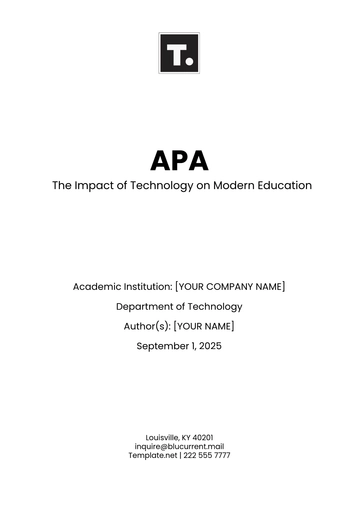Free Gaming White Paper

Author: [Your Name]
Organization: [Your Company Name]
Department: [Your Department]
Date: [Publication Date]
I. Introduction
 GameScape Technologies presents a detailed examination of the gaming industry, encompassing a broad spectrum of topics including market trends, challenges, and opportunities. This section provides an overview of the purpose and structure of the white paper.
GameScape Technologies presents a detailed examination of the gaming industry, encompassing a broad spectrum of topics including market trends, challenges, and opportunities. This section provides an overview of the purpose and structure of the white paper.
II. Executive Summary
The GameScape Technologies Gaming White Paper offers valuable insights for stakeholders such as game developers, publishers, investors, and policymakers. This section summarizes the key findings and recommendations presented in the document.
III. Market Overview
A. Current Landscape
1. Global Gaming Market Size
The gaming industry continues to expand rapidly, with a projected $200 billion market size by 2025.
2. Key Market Segments
Mobile Gaming: Mobile gaming represents the largest segment, driven by the widespread adoption of smartphones and tablets.
PC Gaming: PC gaming remains a dominant force, particularly in regions with a strong esports presence and gaming culture.
Console Gaming: Despite the rise of mobile and PC gaming, consoles remain popular among dedicated gaming enthusiasts.
B. Emerging Trends
1. Rise of Esports
Esports has emerged as a significant growth area within the gaming industry, attracting millions of viewers and substantial investment. Major tournaments such as The International and League of Legends World Championship draw global audiences and offer lucrative prize pools.
2. Virtual Reality (VR) and Augmented Reality (AR)
Technological advancements in VR and AR have the potential to revolutionize the gaming experience, opening up new avenues for innovation. VR headsets such as the Oculus Rift and HTC Vive offer immersive gaming experiences, while AR games like Pokémon GO have captivated players worldwide.
IV. Challenges and Opportunities
A. Regulatory Landscape
1. Legal and Regulatory Challenges
GameScape Technologies advocates for balanced regulations that foster innovation while protecting consumers. Regulatory compliance is essential for navigating complex legal frameworks across different regions and jurisdictions.
2. Emerging Regulatory Trends
Increased scrutiny on loot boxes and microtransactions: Regulators are scrutinizing in-game monetization practices, with concerns raised about their potential to encourage gambling-like behaviors among players.
Data privacy concerns: The collection and use of player data raise privacy concerns, particularly in light of recent data breaches and scandals involving prominent gaming companies.
B. Technological Advancements
 1. Cloud Gaming
1. Cloud Gaming
Cloud gaming platforms offer the potential for greater accessibility and scalability, but face challenges related to infrastructure and latency. Services like Google Stadia and Microsoft xCloud aim to deliver high-quality gaming experiences over the internet, but concerns remain about internet speed and reliability.
2. Artificial Intelligence (AI) in Gaming
AI-driven gameplay mechanics and procedural generation techniques present opportunities for enhancing player experiences and content creation. AI-powered NPCs can provide more dynamic and engaging interactions, while procedural generation algorithms can generate vast, open worlds with minimal developer input.
V. Recommendations
A. Industry Collaboration
1. Cross-Sector Partnerships
Encouraging collaboration between gaming companies, tech firms, and other industries can drive innovation and address common challenges. Partnerships with hardware manufacturers, telecommunications companies, and entertainment studios can lead to the development of innovative gaming experiences and technologies.
2. Regulatory Advocacy
GameScape Technologies recommends proactive engagement with policymakers to shape balanced regulations that support industry growth while safeguarding consumer interests. Participation in industry associations and lobbying efforts can help shape regulatory frameworks that balance innovation and consumer protection.
B. Investment Priorities
1. Research and Development
Allocating resources towards R&D efforts in emerging technologies such as VR, AR, and AI can position companies for long-term success. Investing in research partnerships with academic institutions and technology startups can yield breakthroughs in gaming technology and design.
2. Talent Acquisition and Development
Investing in skilled talent and fostering a diverse workforce is critical for driving innovation and staying competitive in the evolving gaming landscape. Offering competitive salaries, professional development opportunities, and inclusive workplace policies can attract top talent and foster a culture of creativity and collaboration.
VI. Conclusion
The GameScape Technologies Gaming White Paper concludes with a call to action for stakeholders to collaborate, innovate, and adapt to the dynamic challenges and opportunities shaping the gaming industry.
VII. Appendix
A. Glossary of Terms
Esports: Competitive multiplayer video gaming organized into leagues and tournaments.
Microtransactions: In-game purchases of virtual goods or currency using real money.
Cloud Gaming: Streaming video games over the internet from remote servers.
Artificial Intelligence (AI): Simulation of human intelligence processes by machines, particularly in gaming for non-player character behavior and procedural content generation.
B. References
Newzoo. (2023). Global Games Market Report. Retrieved from https://newzoo.com/resources/trend-reports/newzoo-global-games-market-report-2023-free-version
Entertainment Software Association (ESA). (2023). Industry Facts. Retrieved from https://www.theesa.com/
Deloitte. (2023). Digital Media Trends Survey. Retrieved from https://www2.deloitte.com/us/en/insights/industry/technology/digital-media-trends-consumption-habits-survey/2023.html
- 100% Customizable, free editor
- Access 1 Million+ Templates, photo’s & graphics
- Download or share as a template
- Click and replace photos, graphics, text, backgrounds
- Resize, crop, AI write & more
- Access advanced editor
Enhance and Discover the Gaming White Paper Template from Template.net! Crafted for gaming enthusiasts and professionals alike, this editable and customizable template offers a sleek design and seamless functionality. Tailor your content effortlessly with our Ai Editor Tool. Elevate your gaming presentations with ease. Unlock your creativity and uniqueness today.





























